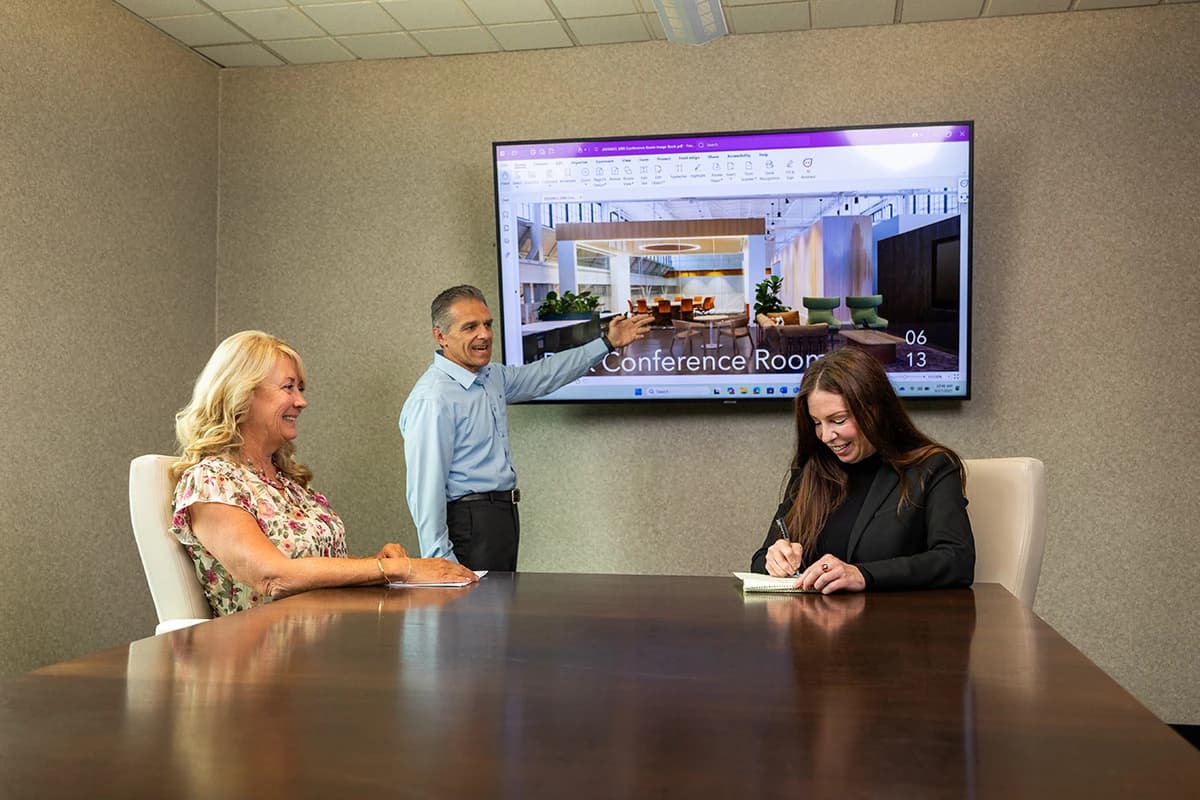
Commercial Real Estate Loan Rates in 2024
Written on May 17th, 2024 | Updated on July 11th, 2025
2023 saw loans, investments and property values heavily affected by high interest rates and other factors resulting from inflation. This has resulted in a mix of rate changes and projections, ranging from minimal shifts to larger rises and drops.
Here’s what those changes look like, and how commercial real estate loan rates will be shaping up (and impacting you) in 2024.
Average Commercial Real Estate Loan Rates By Property Type
2023:
- Office Building – 3.87%
- Industrial Building – 4.14%
- Self-Storage – 5.23%
- Healthcare Facilities – 4.43%
- Retail Building – 4.29%
- Hotel – 4.81%
2024:
- Office Building – 5.38%
- Industrial Building – 5.38%
- Self-Storage – 5.87%
- Healthcare Facilities – 5.37%
- Retail Building – 5.38%
- Hotel – 5.38%
The first step in understanding these fluctuating loan rates is to see where they stand in comparison to 2023. Here’s a rundown of the average U.S. loan rates then and now, broken down by property type:
Types of Commercial Real Estate Loans
Commercial real estate loans vary from type to type, and each brings its own set of benefits. Here’s a list of each type, along with any changes from 2023 to 2024, where applicable:
- Conventional Commercial Real Estate Loan: These loans are the most common type used by investors. Your term will last from five to 25 years with interest rates as low as 4.5 percent (up from three percent in 2023).
- Commercial Bridge Loan: These loans fill the gap between your initial purchase and future long-term financing, and typically cover up to two years with 6.32 to 15.32-percent interest rates (down from 10 to 20 percent in 2023).
- SBA 7(a) Loan: These loans are used for larger purchases and require significant input from your bank before completion. Upon approval, these loans can provide up to $5 million in financing for up to 25 years.
- SBA 504 Loan: This variant of the SBA loan covers both a 40-percent Certified Development Company loan and an up to 50-percent bank loan for as much as $20 million (up from $5 million in 2023).
- CMBS/Conduit Loan: A commercial mortgage-backed security (CMBS) loan is a collection of smaller loans sold to investors on the secondary market. These loans are done outside of traditional channels and can cover you for up to $3 million.
- Hard Money Loan: These loans function similarly to bridge loans, with the funds covering you until larger financing is available. Rather than going through a bank, these loans are acquired from private lenders.
How to Choose a Commercial Loan Lender in 2024
Bringing a commercial loan lender onto your team means finding an expert you can trust. You’ll be giving this person access to your financial information and the power to make big decisions about your real estate venture.
You’ll also need to know what type of loan you need, and if your lender is qualified to help. There’s also a chance you won’t meet the qualifications dictated by either the lender or the loan, or that your budget won’t allow for certain loans to be taken out.
Ask yourself these questions before moving forward with locking in a lender:
- Does your lender know and understand your business and the market you operate in?
- Have you researched the lender to determine how well they will do the job?
- What are other investors saying about your lender?
- What are your bank’s repayment terms and other loan requirements?
What Will Lenders Look At?
Partnering with a lender is a two-way street; they will be checking your qualifications while you’re checking theirs. Knowing what they’ll be looking for is a great way to prepare and make yourself a more appealing partner.
Here’s a rundown of what the average commercial loan lender looks for:
- Finances: What is your cash flow like, and how successful is your venture? Are there any red flags that might lead a lender to consider you a risky investment? How can you assure them that their loan will be paid back?
- Credit: Does your credit score fall under the minimum loan-qualifying requirement of 96% for small businesses? Is your personal credit score in the 640 to 700 range or higher?
- The Property: Does your business occupy at least 51 percent of the building or buildings’ square footage? Are you prepared to place your property up as collateral as part of the loan process, knowing that the lender can seize the property if the loan isn’t repaid?
With inflation beginning to cool and loan payoff rates higher this year than in 2023, the forecast for commercial real estate loan rates is a bright one. As long as you continue watching the numbers as they fluctuate, finding the right lender and ensuring that you qualify for the benefits you need, taking out a loan will continue to be a solid means of financing your new property.
If you’re preparing to take out a loan or search for a lender, talk with the experts at DRK. Our team will answer your questions, provide you market insights and guide you through every step of your commercial real estate journey.
Take a look at the investment-ready commercial properties available in the Columbus, Ohio, area right here.


